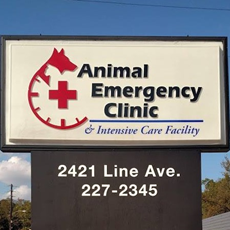Library
-
Buprenorphine is used on and off label and is given by mouth into the cheek or by injection to treat pain or as a preanesthetic. The most common side effect is sleepiness. Do not use in pets that are allergic to it or other opioids, or in pets being treated with amitraz. If a negative reaction occurs, please call your veterinary office.
-
Buprenorphine long-acting transdermal (brand name Zorbium) is an opioid analgesic (pain relieving) medication. It is labeled for use in treating post-surgery pain in cats. This medication is a controlled narcotic available in the United States. Buprenorphine long-acting transdermal comes in a liquid form applied topically directly to the skin once (one time) by the veterinary team.
-
A burn is a type of skin injury, commonly caused by heat, fire, or chemicals. Burns are classified based on how many layers of skin are affected; this classification scheme can help predict prognosis. Treatment of burns varies, depending on the severity of the burn and how much of the body is affected. Superficial burns may heal without treatment, while more severe burns may require hospitalization and possible skin grafts.
-
Buspirone is given by mouth and is used off label to treat behavior disorders in dogs and cats. Common side effects include increased friendliness or aggression, sleepiness, decreased appetite, nausea, or a slower heart rate. Do not use in pets that are allergic to it or have recently worn a flea/tick collar. If a negative reaction occurs, please call your veterinary office.
-
Butorphanol is a partial opiate agonist/antagonist that is used as an analgesic, pre-anesthetic, antitussive, or antiemetic. The injectable form is used subcutaneously, intramuscularly, or intravenously, and the tablet is given by mouth. Side effects include sedation, ataxia, anorexia, or rarely diarrhea. Caution should be used in pets with liver or kidney disease, Addison's disease, head trauma, or other CNS dysfunction, or in geriatric or severely debilitated patients.
-
Pet owners may not realize that caffeine can be harmful to their pets. They also may not know that many foods and drinks in their cupboards contain caffeine. This particular chemical can be toxic for both cats and dogs.
-
These two conditions are the result of calcium being deposited within the skin. They are usually of minor significance in young dogs and cats but can indicate serious underlying diseases in older pets. This handout describes the different types of calcinosis circumscripta and cutis and associated causes, clinical signs, and treatments.
-
Calcitriol is used off label and is given by mouth or injection to treat low blood calcium levels associated with low parathyroid hormone, as well as chronic kidney disease, certain cancers, and certain skin diseases. Side effects are uncommon if the dose is appropriate.
-
Calcium acetate is given off label and by mouth to treat elevated blood phosphorus levels, especially due to kidney disease. Side effects may include nausea or stomach upset. This medication should not be used in pets that are allergic to it or have high blood calcium levels. If a negative reaction occurs, please call your veterinary office.
-
Calcium carbonate + chitosan (brand name Epakitin®) is a phosphorus binder and calcium supplement. It is used to treat high blood phosphorus levels in cats and dogs with chronic kidney disease and to treat low blood calcium levels in cats, dogs, and other species.




